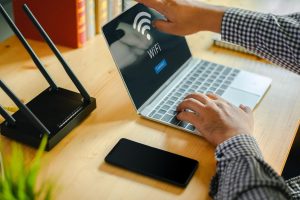As remote work has become more and more popular, so too has employee monitoring. Understandably the two are often seen as interconnected, and that is largely due to the fact that the benefits of employee monitoring to remote work are too attractive to ignore.
Understanding Employee Monitoring
Using many techniques and technologies, employee monitoring tracks work-related actions. From basic time-monitoring applications to more sophisticated systems tracking computer use, internet activity, and even conversation patterns, these technologies span Monitoring enables companies in remote work environments to make sure staff members are performing successfully and efficiently even when they are not physically present in the office.
Although the idea of keeping an eye on things might cause privacy and trust issues, it’s important to understand that, done well, monitoring can help to build responsibility, openness, and mutual respect. The secret is to use open, equitable monitoring policies with an eye on increasing output instead of just staff control.
Benefits of Employee Monitoring in Remote Work
What are these benefits? Just keep reading to find out.
Implement Flexible Yet Effective Work Schedules
Part of what makes remote work so appealing is that it offers a high degree of flexibility. However, it is still important to have some sort of work schedule so that employees are available at the right hours to attend meetings and communicate or collaborate.
Employee monitoring software can help when implementing those schedules. With tools like Controlio, you can track exactly when employees are active, and make sure they’re adhering to the schedules that are set out.
On top of that Controlio will also give you insights into employee productivity via its productivity score and the hours when each employee is most productive. Based on that data you can potentially tailor work schedules for each individual so that it is a better fit for them.
Improve Project Management
With employee monitoring, you can find out exactly how your employees allocate their time to various tasks. That in turn will let you make more informed decisions regarding the timelines of the project, how resources should be allocated, and how tasks should be distributed.
In Controlio you can easily track how long employees spend working on tasks that are assigned to them, which will provide the data that you need to improve project management. It will also enable you to see when employees excel at certain types of tasks and complete them faster – allowing you to improve your task allocation.
Encourage Better Mental Health and Well-Being
One of the main downsides when working remotely is that it is easy for your mental health and well-being to be affected. Many remote workers tend to overwork, and many also feel isolated and stressed out – all of which can lead to burnout.
The reports that Controlio provides can help you to spot early warning signs of any issues with your employees – and you can either check them on its dashboard or have them emailed to you at fixed intervals. Its activity data will let you check if any employees are overworking, and whether or not they’re taking regular breaks.
On top of that, the productivity data in Controlio can provide a gauge of their overall state. If productivity suddenly drops, it is normally a sign that your employees may be facing certain issues and you may want to talk to them about it and see how it can be addressed.
Better Time Management
Remote professionals who have to reconcile their professional obligations with personal life needs depend on good time management. By providing insights into how workers use their time across the day, employee monitoring technologies help improve time management. These instruments may record staff login times, work completion times, and break times as well as employee log-in times.
Using this information, staff members may see trends in their output that can be causing problems such as excessive breaks or time spent on low-priority work. This data may also be used by companies to provide comments and direction on bettering time management abilities, hence fostering a more efficient staff.
Identify Areas of Improvement
Last but not least, employee monitoring can help to identify areas that need improvement. When it comes to workflows, It will make it easier to spot bottlenecks and inefficiencies so you can address them.
Similarly, the in-depth insight into employee activities and productivity will help identify areas that individual employees can improve on as well. It can be used to pinpoint training and development opportunities, as well as come up with internal training or workshop plans.
Conclusion
All in all employee monitoring is an invaluable (and almost irreplaceable) tool when it comes to remote work. Not only does it facilitate it, but it can also be used to ensure that everything runs smoothly and will help you to overcome various challenges as well.
Just be sure that you adopt a transparent approach and notify your employees so that they don’t feel their privacy is being invaded.












